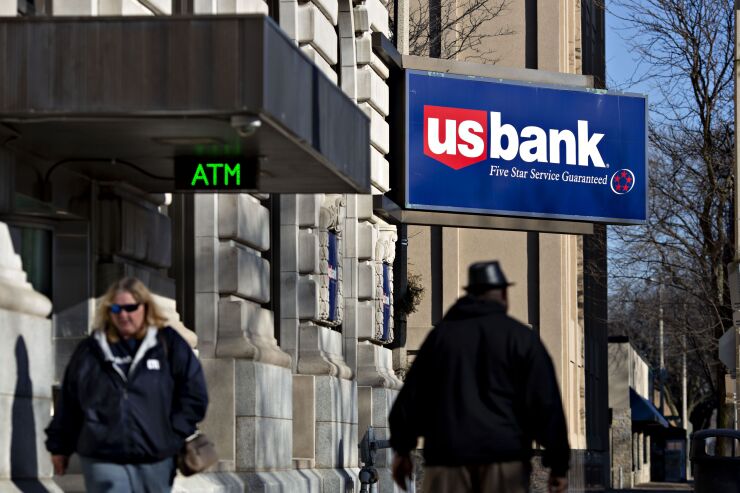
U.S. bankers raised their standards for loan approvals yet again in the third quarter, but the pace of tightening slowed for a fifth consecutive quarter and indicated the lending industry may be on the cusp of peak credit costs for the current cycle.
The Federal Reserve's October survey of senior loan officers across the country found that, while bankers further upped their requirements for loan approvals, they anecdotally reported that they did so only incrementally and at a slower rate than the prior quarter. That continued a trend.
"Banks continued to tighten loan underwriting standards, but the pace moderated for most loan categories for the fifth quarter in a row," analysts at D.A. Davidson said in a report Wednesday after the Fed survey was released.
Historically, the Davidson analysts said, loan charge-offs reached a pinnacle and then declined following a five-quarter trend of moderation. Loans have soured at higher rates in recent quarters due to fallout from lofty inflation and high interest rates. But inflation has decreased significantly, and interest rates are falling. The Fed
The Labor Department on Wednesday reported that its
The Federal Reserve Board's top payments official said the agency should not move forward with its push to lower the cap on debit interchange fees until it has a better understanding of recent Supreme Court decisions.
The Davidson analysts noted that the bank industry entered a deteriorating credit cycle with the Fed's April 2022 loan officer survey. Total net charge-offs, since hitting a trough at 19 basis points of overall loans in the third quarter of 2021, gradually increased to 68 basis points in the second quarter of this year, the latest available industrywide data. However, the pace of increase in charge-offs eased at the same time banks moderated the level of tightening of underwriting standards. Charge-offs were up just 3 basis points in the second quarter and flat in the first quarter of this year.
"Assuming the U.S. economy continues to
During the third quarter earnings season in October and early this month, bankers continued to strike cautious tones on credit quality. But most said they did not expect conditions to worsen further and, at some point in 2025, they anticipated headwinds would dissipate as borrowing costs decline alongside lower rates.
"We absolutely feel there is stabilization," John Stern, chief financial officer at the $686 billion-asset U.S. Bancorp in Minneapolis, said in an interview. "The sentiment in this economy is positive."
Stern said that while U.S. Bancorp reported modest deterioration by some measures, its credit quality had leveled off at healthy levels. For example,
Broadly, the American Bankers Association's latest Credit Conditions Index for the current quarter, released last month and based on assessments from bank economists, increased 28.2 points from the prior quarter to 56.9. It marked the highest reading since 2022 and the fourth consecutive quarter of improvement.
The above-50 reading indicates that
"There's been a lot of uncertainty with this economy, with the market, but lower interest rates have spurred more confidence and should help minimize problem loans going into next year," said Mike Matousek, head trader at U.S. Global Investors.






